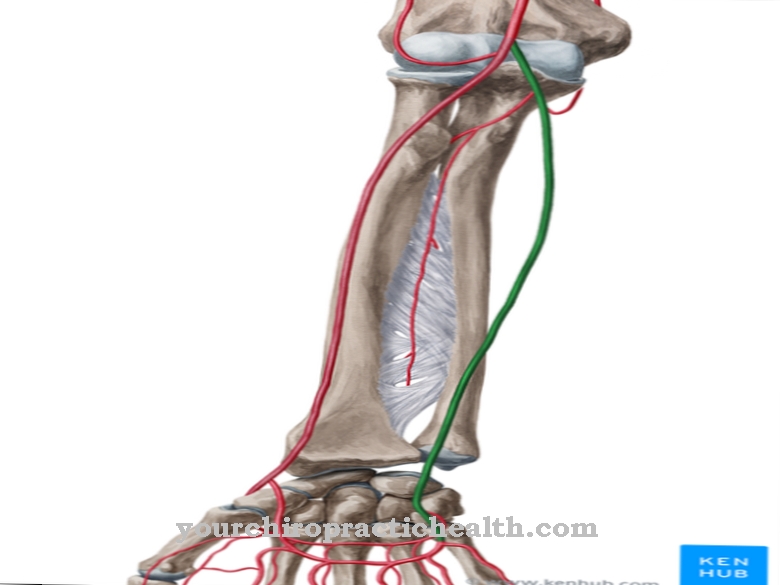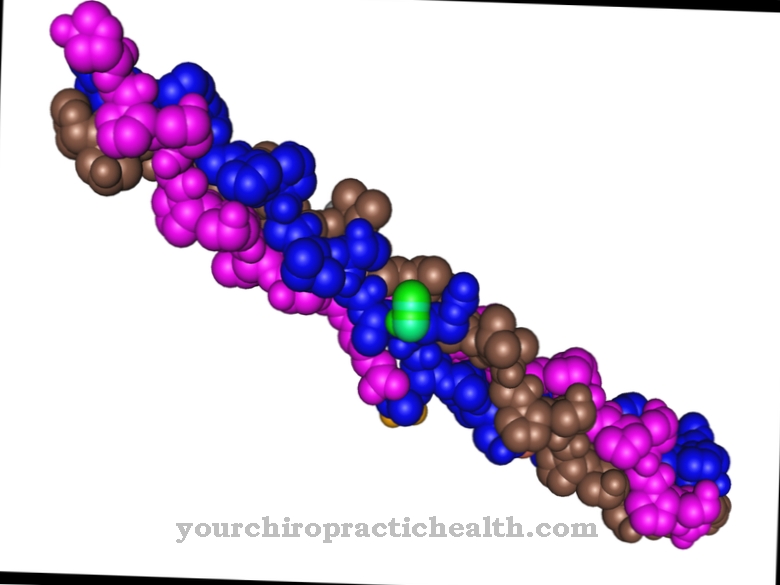Under the Subscapularis muscle (lat. for Subscapular muscle) a larger skeletal muscle of the shoulder is understood. The inside of the shoulder blade is completely covered by the subscapularis muscle. Its primary task is the internal rotation of the humerus (Latin for humerus).
What is the subscapularis muscle?
As an important component of the ventral group of the shoulder muscles, the subscapularis muscle is a central muscle in the rotator cuff. It starts on the inside of the scapula (shoulder blade).
Together with the other muscles of the rotator cuff, the infraspinatus muscle (Latin for lower bone muscle), supraspinatus muscle (Latin for upper bone muscle) and the teres minor muscle (Latin for small round muscle), it contributes to the head of the humerus to hold and stabilize in the joint socket.
Anatomy & structure
The subscapularis muscle has its origin in the subscapularis fossa, a bone depression on the ventral side of the shoulder blade. It starts on the lesser tuberosity (Latin for small cusp) of the humerus and on the bony structure that lies directly below it (crista tuberculis minoris). Here, some of the tendon fibers of the muscle can reach into the shoulder joint capsule.
Of the rotator cuff muscles, the subscapularis muscle is the largest. Starting from there it runs in the direction of the caput humeri (Latin for head of the humerus). The upper part of the muscle (however like that of the supraspinatus muscle) runs between the roof of the shoulder and the humeral head. The nerve supply of the muscle is given by the subscapular nerve (Latin for subscapular nerve). This is one of the branches of the brachial plexus (Latin for plexus).
Function & tasks
The primary task of the subscapularis muscle is to ensure the internal rotation of the upper arm in the shoulder. Another main function is the adduction of the upper arm to the body, i.e. the approach. The muscle can also cause the abduction of the upper arm, i.e. its removal from the body.
As some muscle fibers of the subscapularis muscle adhere to the capsule of the shoulder joint, the joint capsule is stretched and thus stabilized. This muscle is an extremely strong shoulder muscle. It has a high physiological cross-section, which is due to its pronounced feathering. The subscapularis muscle is therefore the most important actor for the internal rotation of the upper arm. The adduction is supported by the upper part, while the lower part of the muscle provides abduction. The stabilization of the humerus knuckle in the glenoid fossa (Latin for flat socket) prevents the bone from jumping out of the socket.
In the same way, pinching of the capsule of the shoulder joint is avoided in this way. The end tendon of the muscle is very wide, which is why it plays an important role in protecting against anterior shoulder dislocation. Examples of the function of the muscle in everyday life are numerous wherever internal rotations are required. A typical task for this muscle is steering while driving, with arms crossed in front of the body. An internal rotation of the shoulder is also caused when the seat belt is put on.
You can find your medication here
➔ Medicines for back painDiseases
Often the subscapularis muscle as part of the rotator cuff is also affected in the event of a rupture of this cuff. The injury to the muscle can therefore produce the same symptoms as a common rotator cuff tear.
In addition to usually severe pain, an injury to this muscle also shows a significantly impaired range of motion when the upper arm is rotated internally. However, it is also possible that a simultaneous dislocation occurs, that is, that the shoulder is dislocated in everyday language. A counter-impact with an abducted arm, i.e. arm moved away from the body, is typical, especially in certain accident situations. Such impacts with externally rotated arms often occur in sports such as handball or volleyball. There is severe pain associated with the injury. In such cases, the person affected typically moves their arm slightly away from their body and supports it to the side to avoid pain.
The mobility of the shoulder is very limited, while the regular shoulder contour is missing. X-ray examinations, magnetic resonance imaging and magnetic resonance imaging are available for diagnosis. In X-rays, the head of the upper arm is usually no longer visible in the joint socket. In both methods of tomography, possible tears in the muscle are evident. The function of the subscapularis muscle can also be restricted by paralysis of the subscapularis nerve, i.e. the nerve supplying the muscle. In this case, too, restriction of internal rotation is a central symptom.
In this case, the palm in particular can only be moved to the back with the help of other muscles. Due to its stabilizing function, which is important with regard to the humerus head, damage to the subscapularis muscle also affects the stability of the humerus head. Damage to the subscapularis leads to significant destabilization of the upper chamber. The upper arm can slide forward until it rubs against the roof of the shoulder or the coracoid process (Latin for raven beak).
This phenomenon is known as shoulder impingement. This is not to be confused with the more common outlet impingement that occurs due to a narrowing of the bones. Partial lesions on this muscle are problematic. The loss of function often goes unnoticed at first due to the large set of tendons and the direct contact between the muscle and the upper arm below the tendon.




























